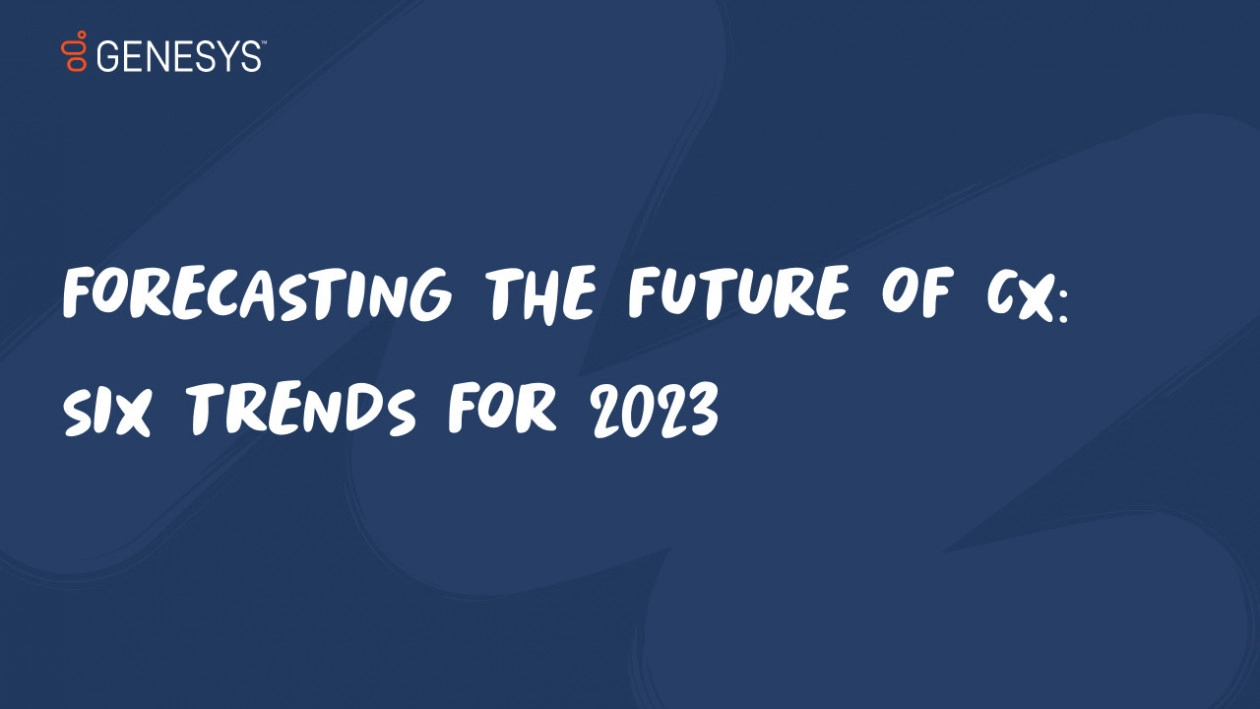Your Genesys Blog Subscription has been confirmed!
Please add genesys@email.genesys.com to your safe sender list to ensure you receive the weekly blog notifications.
Subscribe to our free newsletter and get blog updates in your inbox
Don't Show This Again.

Consumers use countless digital channels to reach out to companies. And they expect simplicity and speed from customer service interactions. Yet, most customer journeys are fragmented and frustrating. Providing consumers with a great customer experience (CX) has become more complex.
The best way to meet all their channel preferences is to be channel-agnostic. To do this, companies need to orchestrate optimal experiences to deliver a connected customer journey that moves seamlessly across digital and voice channels. And it should help move customers closer to a resolution — faster.
Orchestrating the end-to-end customer journey can bridge silos and eliminate obstacles. It enables companies to provide fluid, personalised journeys across channels — at scale and in real time.
Customer journey mapping helps CX leaders envision the best pathways, while customer journey analytics provides insight into customers’ actual behaviours. It also allows you to identify issues and opportunities in existing processes.
This powerful combination not only enables companies to improve CX, but also to increase alignment across the enterprise. Plus, successful journeys can shape customer behaviour, reduce customer effort, improve efficiency and build customer loyalty.

Get a look at the most important customer experience trends this year.
Optimising customer journeys doesn’t happen in a vacuum. Customer journeys need to be continuously orchestrated, monitored and enhanced to deliver measurable results. This requires a robust, yet agile CX platform that supports all channels and touchpoints with true omnichannel routing.
Truly effective customer journey optimisation requires software that will enable you to:
Recognise customer intent and prior experiences to ensure that every interaction helps customers progress seamlessly toward achieving their goals.
Resolve issues proactively to maximise self-service rates, eliminate unnecessary channel switching and reduce call volume.
Use intent and prior behaviour to route customers to the next-best action or best agent. And provide visibility into actions customers have already taken.
When considering options for improving your customer experience strategy, look for a CX platform that includes both customer journey mapping software and journey analytics. You should also look for a product or service that excels in these five areas.
Customer behaviour is fluid; preferences change. Rather than using static customer segmentation, choose journey mapping software that supports switching to journey-driven audiences.
This will enable you to orchestrate more relevant experiences that better reflect individual customer intent and prior interactions and behaviours. Plus, tailoring customer segments by attributes, time or behaviour can eliminate poor experiences.
Experience orchestration goes beyond traditional personalisation methods. Modern customer journey mapping software helps leverage journey data from every channel, source and system. This means each interaction reflects a customer’s entire experience with an organisation. As a result, every interaction is highly personalised, because they’re based on each customer’s objectives and preferences.
Choose a journey mapping software that supports routing calls to the right agent based on customer goals and past customer interactions. It should also give employees easy access to relevant customer information. As such, employees can resolve customer issues more quickly and efficiently — and provide a more empathetic experience.
Optimising the experience in one channel without considering its impact on other channels can lead to unintended consequences. For example, one company that wants to reduce talk time might increase bookings for service technicians — a more expensive interaction. It’s vital to track the entire experience with your company across channels and time.
Customer journey mapping software should integrate easily with existing applications. This could include campaign automation, web experience management, as well as contact centre and workflow platforms. This means every email, text, chat and phone call is informed by the customer’s prior experience and goals.
Simulate journey improvements and determine the optimal outcome before making changes to interactions or processes. Run A/B tests to evaluate potential improvements without compromising your customer experience. A robust customer journey mapping software enables companies to adapt personalisation logic, and compare journeys and potential impact. They can also rapidly visualise results at scale.
Customer journey mapping allows companies to quickly resolve issues and harness opportunities in the customer experience. And they increase organisational alignment.
Today, customer experience, marketing and operations leaders use customer journey orchestration software to deliver personalised experiences and seamless journeys that set them apart from their competitors and improve business outcomes.
Subscribe to our free newsletter and get the Genesys blog updates in your inbox.